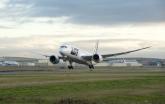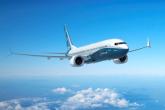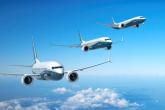News from Travel Technology Update: The
Business Travel Coalition (BTC) launched a petition to urge the Obama
administration to force airlines to provide ancillary fee information to
all sales channels.
The petition was posted on the “We the People” platform on the White
House website, which allows any American to create and post a petition
on the site and collect signatures.
If the petition gathers 25,000 signatures within 30 days (by Dec. 25),
it will be reviewed by a standing group of White House staff, routed to
any other appropriate offices and generate an official, on-the-record
response.
The White House may decline to respond to petitions that are more appropriately addressed in other venues.
The petition states that the US Transportation Dept. (DOT) “must
require airlines, via a rulemaking, to provide fee information to sales
channels where they offer base fares so consumers can see, compare and
buy the complete air travel product.”
The BTC said its objectives for the initiative include: encouraging the
White House to directly engage the hidden airline fees issue;
generating press over the holiday travel period, and using the petition
as a powerful consumer filing for the DOT docket when the time comes in
2013.
The DOT plans to issue its much-delayed Enhancing Passenger Protections
III Notice of Proposed Rulemaking on Nov. 30, with a public comment
period through Feb. 7.
The issue has been a thorny one for the DOT, since it involves commercial agreements between GDS companies and airlines.
Fee information is not always clear-cut. Some airlines offer bundled
services, either as fare families or as packaged add-ons to the base
fare, which are not easily compared. For example, priority boarding
might be combined with a “mileage booster” feature or a discount on
itinerary changes.
“Premium seating” may mean an extra legroom seat on one carrier or a standard far-forward aisle or window seat on another.
Fees also can vary according to the customer’s status. A gold medallion
customer on Delta Air Lines (DL), for example, can select a domestic
economy comfort (additional legroom) seat for no additional charge and
receives a 50% discount on international economy comfort seats.
BTC chairman Kevin Mitchell said 80% or more of the problem for
consumers and corporate travel departments could be addressed with fee
information on checked bags, advance boarding and premium seat
assignments.
“That’s where the money is and where the frustration lies,” he said in an email to TTU.
“Agents can determine the differences, for example, about premium
seating variances, among airlines and equipment, via information in the
description fields that airlines provide for ATPCO entries.”
Once agents are empowered to sell these services, “they would be
motivated to learn, for example, the differences in seating attributes
for their most frequently sold carriers.”
He said the ATPCO Optional Services and Branded Fares process “has been
developed, tested and implemented, and it is inexpensive for airlines
to use.”
Airlines are required to post all fees on their websites, and some of
the lists are lengthy. DL devotes several web pages to its baggage
policies alone, which vary by region and address everything from
oversized bags to antlers.
Aside from seating, priority boarding and bags, other ancillary
products “are less of an issue for consumers, and many of them are best
suited to be sold at different points in the process leading up to
departure,” Mitchell said.
“There will no doubt be all manner of dreamt-up new services (some
commercially viable, some not so much) that just will not make sense to
be sold through the agency channel enabled by the GDSs.”
If airlines are required to provide fee information to GDSs, that does
not mean they will be required to allow ancillary sales in GDSs.
But although movement on that front has been sluggish, more airlines
are going that route: DL has agreed to make economy comfort seats
available through Amadeus and Travelport, for example, and US Airways is
selling its choice seats through Sabre.












